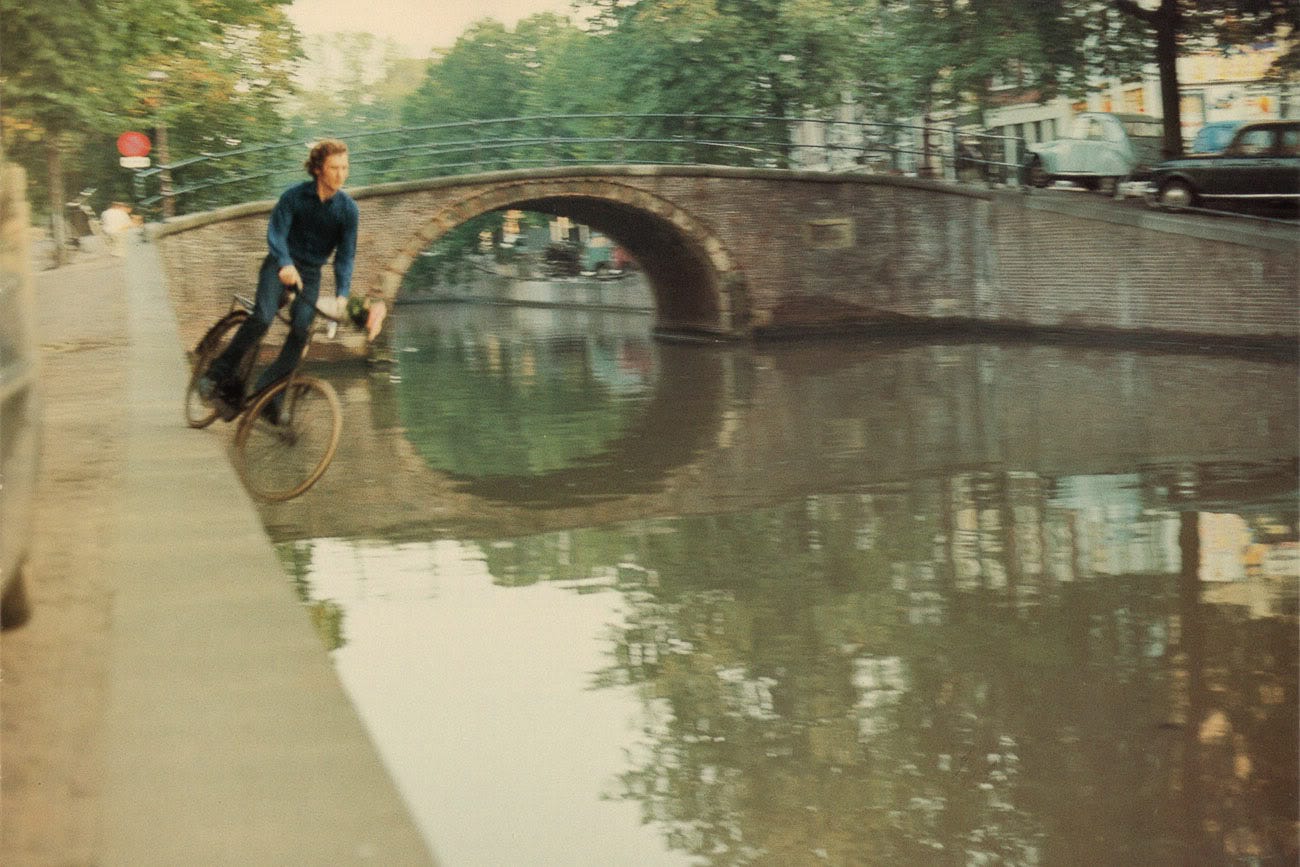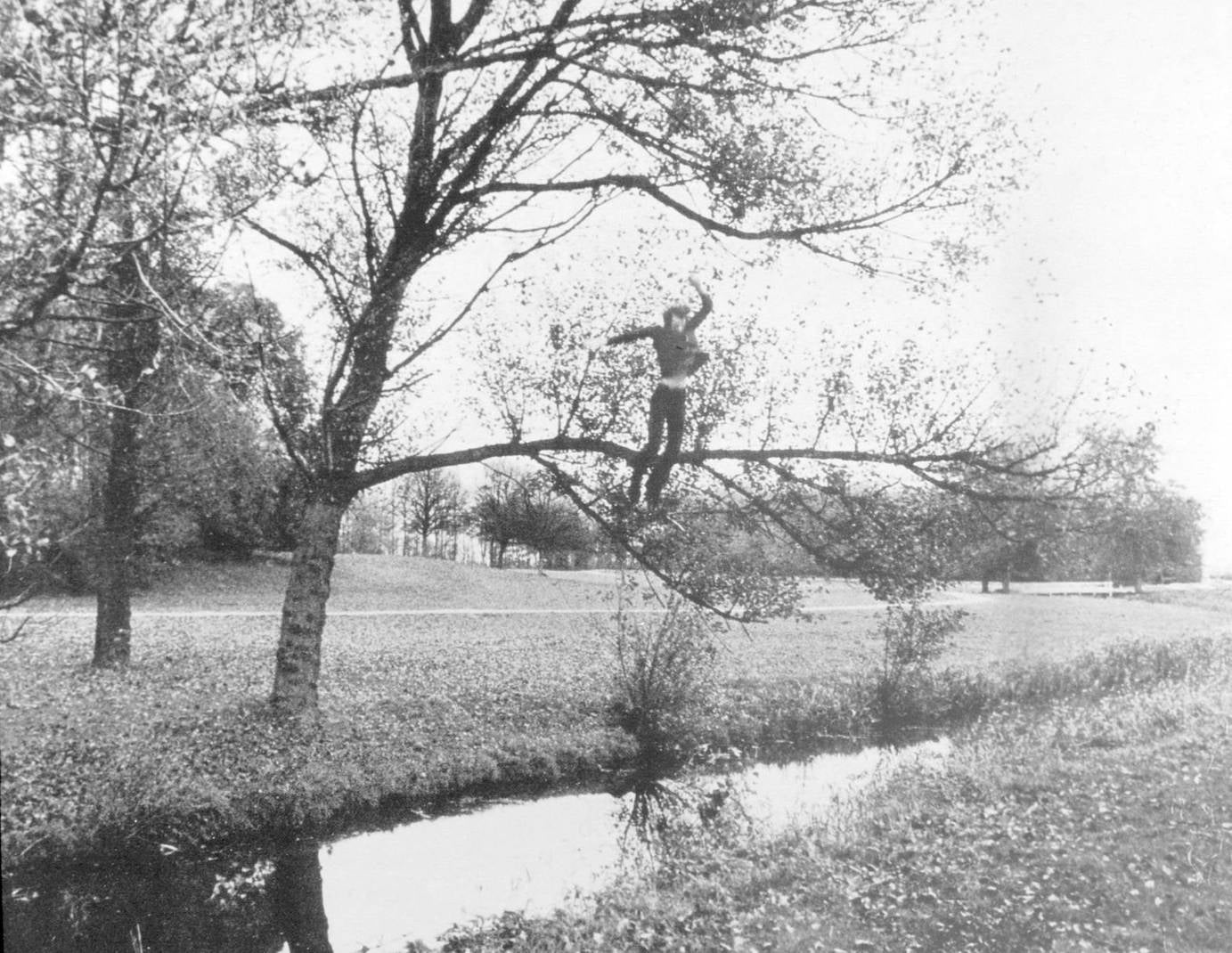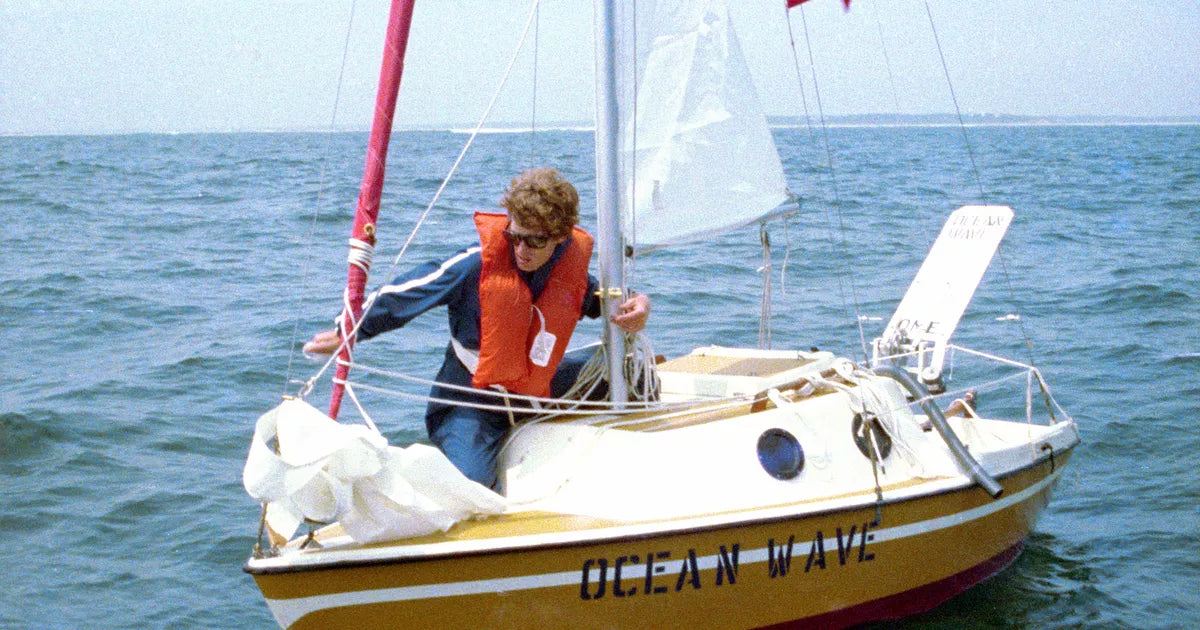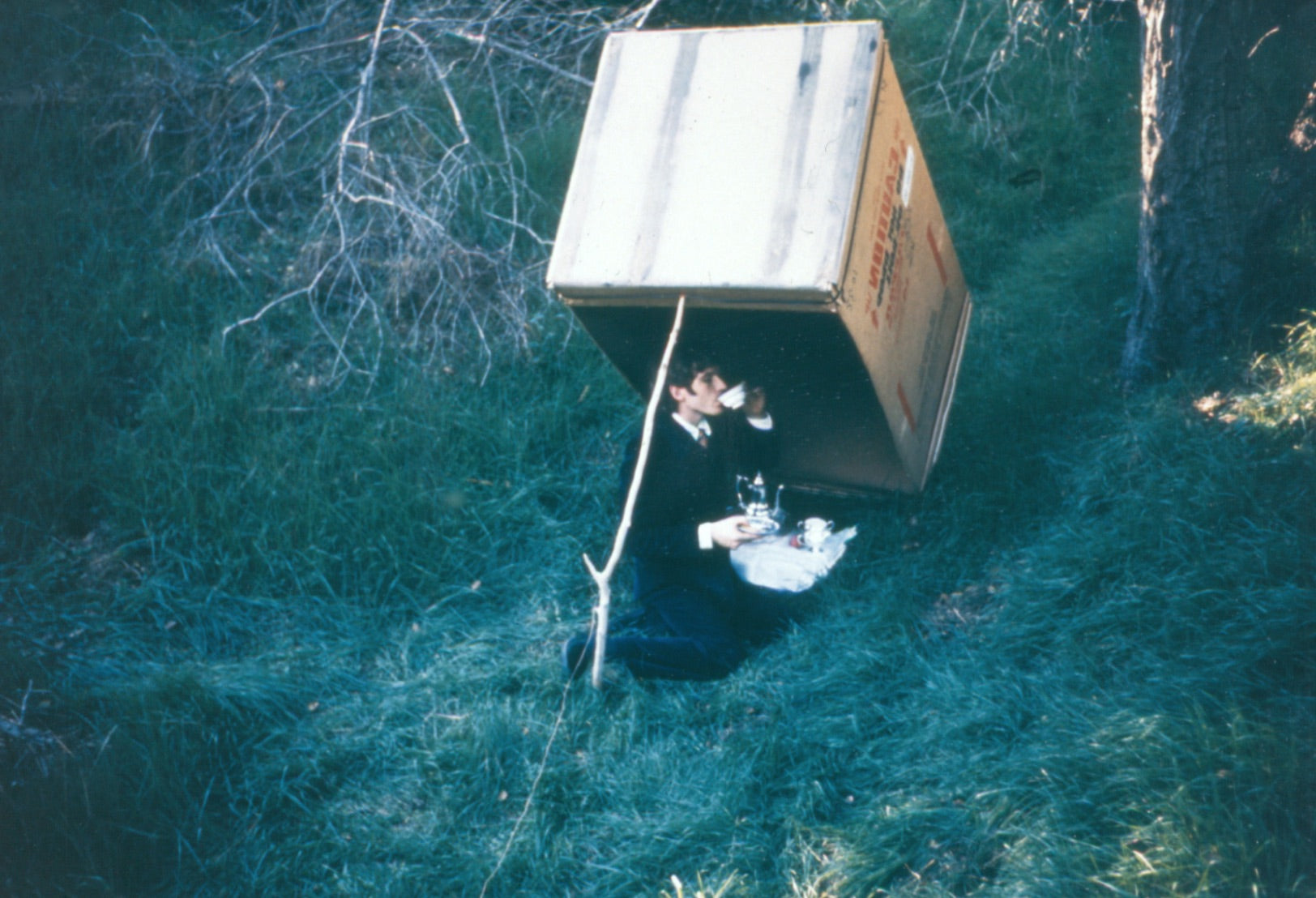
Dutch-Californian artist Bas Jan Ader remains an intriguing and enigmatic figure in the history of contemporary art. Born in 1942, Bas Jan Ader built a distinctive, poetic body of work that explored existential themes, vulnerability, and the fusion between art and life. His life was marked by personal tragedies, including the execution of his father by the Nazis during World War II, events that cast a lasting shadow over his artistic practice. However, it was his mysterious disappearance in 1975, while trying to cross the Atlantic on a sailboat of modest dimensions, that gave Bas Jan Ader an aura of myth and depth to his work. This article seeks to explore the fascinating journey of Bas Jan Ader, examining his notable works, influences and the enigma surrounding his disappearance at sea, all of which contributes to the construction of a unique and lasting artistic legacy.

What was Bas Jan Ader's journey?
Bas Jan Ader, born April 19, 1942, was a Dutch and Californian artist known for his unique and poetic approach to art, incorporating elements of performance, photography and video into his work. His artistic and personal journey is fascinating and often tragic. Bas Jan Ader's childhood was marked by the tragedy of the Second World War. His father, a minister, was executed by the Nazis for sheltering Jewish refugees in the family home. This traumatic event had a lasting impact on Bas Jan Ader's life and work, although he made only oblique references to the experience throughout his career.
Bas Jan Ader studied art at the Gerrit Rietveld Academie in Amsterdam, but his true affinity with the United States developed during a year-long exchange in Washington, DC, in 1960. In 1963, he moved to Los Angeles, where he joined the emerging conceptual art scene. During his studies at the Otis Art Institute, he met Mary Sue Andersen, daughter of the school's director, whom he married in Las Vegas.
In 1970, Bas Jan Ader entered a highly productive period of his career, starting with his first falling film, where he appears sitting in a chair, falling from the roof of his two-story house. This work established the recurring theme of fall in his work, a metaphor that would gain deeper meaning as his career progressed. In 1975, Bas Jan Ader embarked on an audacious and mysterious journey. He set sail on a 12½-foot sailboat from Massachusetts, as part of an artistic trilogy called "In Search of the Miraculous." The trip across the Atlantic was supposed to be the second act of this trilogy. Six months after his departure, the boat was found, half submerged off the coast of Ireland, but Bas Jan was missing. Its absence remains one of the most intriguing mysteries in the history of contemporary art.
Bas Jan Ader, like other contemporary artists such as Chris Burden and Jack Goldstein, explored themes of danger, control and disappearance in his artwork. These artists responded to the era marked by the Vietnam War, a temptation for illusion and the search for the sublime. Bas Jan Ader, in particular, connected his fascination with loss of control and self-determination to his father's death during World War II. His latest work, "In Search of the Miraculous," consisted of nighttime photographs in different locations, creating a dramatic narrative. The second act of the work, his solitary crossing of the Atlantic, ended tragically when his boat was found, but Bas Jan Ader remained missing. The enigmatic nature of Bas Jan Ader's life and disappearance adds a layer of complexity to the interpretation of his work. His work, influential to this day, reflects not only his artistic pursuit, but also the existential themes and personal tragedy that shaped his worldview.

What are the characteristics of Bas Jan Ader's works?
Performance and Vulnerability: Bas Jan Ader frequently incorporated performance elements into his works, often exposing his own physical and emotional vulnerability. His falls and physical actions were recorded in films and photographs, creating a dialogue between the presence of the artist's body and the ephemerality of the actions performed.
Fall Theme: Fall is a recurring theme in the works of Bas Jan Ader. It explored the idea of losing control, whether falling off a roof or tipping a bicycle into a canal. These depictions of falls had a poetic and existential quality, often connected to his own experience of loss and trauma.
Incorporation of Natural Elements: Some works by Bas Jan Ader incorporated natural elements such as trees and sawhorses. In "Broken Fall (Geometric), Westkapelle, Holland" (1971), for example, he falls sideways onto an easel on a tree-lined path, suggesting a surrender to nature and the surrounding environment.
Fusion of Art and Life: Bas Jan Ader was deeply interested in the fusion of art and life. His actions, often dangerous, challenged the traditional boundaries of artistic practice, seeking to incorporate everyday life and personal experiences into his work.
Narrative and Symbolism: Many of Bas Jan Ader's works have a narrative quality, telling visual stories through his actions. His project "In Search of the Miraculous" is a clear example of this, where he created a dramatic photographic narrative followed by a real and mysterious journey across the Atlantic.
Existentialist Influence: Bas Jan Ader was influenced by existentialist ideas, especially those of Albert Camus. The search for freedom and the confrontation with the absurdity of life were central themes in his work, reflecting a deep reflection on the human condition.

What are your most famous works?
"Fall I (Los Angeles)" (1970): This is one of his first fall films, where Bas Jan Ader is seen sitting in a chair on the roof of his Los Angeles home, leaning forward and falling. The use of falling as a metaphor and physical performance became a recurring theme in his work.
"Fall II (Amsterdam)" (1970): In this work, Bas Jan Ader repeats the idea of falling, this time while cycling along a canal in Amsterdam, leaning off the bike and falling into the water.
"Broken Fall (Geometric), Westkapelle, Holland" (1971): A film in which Bas Jan Ader falls sideways onto an easel on a wooded path. The work explores the relationship between the artist and nature, suggesting a surrender to natural forces.
"I'm Too Sad to Tell You" (1971): In this work, Bas Jan Ader recorded a video in which he appears crying, expressing deep emotions. The play is considered an exploration of emotional vulnerability and one of his most intimate works.
"In Search of the Miraculous" (1975): This is Bas Jan Ader's most ambitious project consisting of a series of 18 night photographs, followed by his actual attempt to cross the Atlantic in a small sailboat. Bas Jan Ader disappeared during the journey, and the project became a milestone in his career and contributed to the mystery surrounding his figure.
"Nightfall" (1971): A work that presents scenes of dusk and is an integral part of his artistic exploration in relation to the sublime and nature.
"Untitled (The Elements)" (1971/2003): A work that highlights natural elements and evokes a poetic and mysterious atmosphere.

How did Bas Jan Ader disappear at sea?
Bas Jan Ader's disappearance at sea occurred during his attempt to realize the second part of his artistic project "In Search of the Miraculous". In 1975, Bas Jan Ader embarked on a voyage across the Atlantic in a 12½-foot sailboat called "Ocean Wave". His plan was to sail from Massachusetts to Falmouth, England, as part of an artistic trilogy that also included a series of nighttime photographs titled "In Search of the Miraculous."
Bas Jan Ader began his journey in July 1975, and the project was conceived as a poetic and existential exploration, where his journey across the ocean would serve as the second part of the trilogy. He left in a small boat and faced the hardships of the Atlantic Ocean in a vessel considered remarkably small for a transatlantic crossing. The disappearance occurred approximately six months after the start of the journey. In April 1976, the crew of a Spanish fishing boat found Ader's sailboat off the coast of Ireland, half submerged. However, Bas Jan Ader was not on board, and his body was never recovered.
The exact circumstances of Bas Jan Ader's disappearance remain unknown and mysterious. There is no clear evidence as to what caused Ader to disappear at sea. His absence and the mystery surrounding his departure became an integral part of his work and contributed to the complexity of Bas Jan Ader's artistic legacy. Some speculate about the possibility of suicide, while others consider the hypothesis of a tragic accident during the crossing. However, due to a lack of conclusive information, Bas Jan Ader's exact fate remains an enigma.

